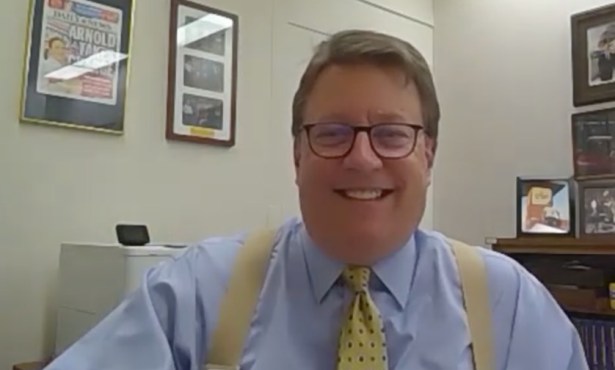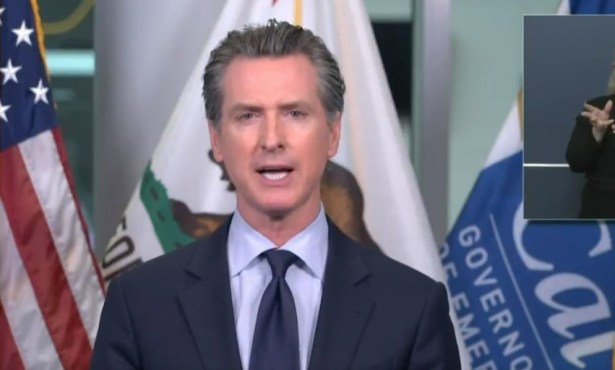Justin Fareed (Finally) Concedes 24th to Salud Carbajal
Despite Campaign Zillions, Best Vote Predictor Is Partisan Registration
This just in: Justin Fareed has conceded the 24th Congressional District (CD) race to Salud Carbajal.
In other news, the Cleveland Indians acknowledge they lost the World Series, House Republicans express shock at reports the Earth is not flat, and Hillary Clinton’s handlers think maybe sending her to Georgia more often than to Wisconsin may have been a mistake.

In welcoming Justin to what the rest of us like to call “the real world” (and, devil’s advocate here, but was it really too much to expect the word “congratulations” to appear in his stand-down message?) a postmortem peek at the (almost) final numbers raises an intriguing question: Why did we bother with all the tens of millions of dollars’ worth of attacks, counterattacks, polls, ads, mailers, debates, commentaries and snooze analyses of a campaign when we could have simply transposed registration numbers onto the election results?
Consider:
• District-wide, the Secretary of State’s final registration report on the 24th CD showed Democrats with an 8 percentage point edge over Republicans — 39.9-to-31.9 percent. That will come very close to Salud’s final victory margin, which now stands at 6.6 (53.3-to-46.7 percent), with several thousand late and provisional ballots still being counted.
• In the San Luis Obispo County portion of the district, Republicans held a 2.6 percentage point pre-election registration edge — 37.7-to-35.1 percent, exactly the margin by which Fareed is beating Carbajal in the county (51.3-to-48.7 percent)
• In Santa Barbara County, registered Democrats outpaced the GOP by 15.7 points (43.3-to-27.6 percent) and Salud lost only a tiny amount off registration in stomping Young Justin by 13.4 percentage points (56.7-to-43.3 percent) on his home turf.
• In the tiny Ventura County part of the district, Carbajal also finished only a couple of points off the Dems’ huge, 20.8 percentage point registration advantage, beating Fareed 59.8-to-40.2 percent in an area that accounted only for one percent of the total vote.
TICKET SPLITTERS BEGONE. While the splits between the two major parties are informative, it should be noted that nearly one-fourth of registered voters in each county are so-called Decline to State independents. Without knowing for sure what proportion of the overall electorate they represented in the Election Day runoff between major party candidates, however, it appears as if the rivals split independents, with Fareed perhaps winning them slightly.
Regardless, the nearness of the final gaps between the candidates to the pre-election numbers is significant because it represents a growing trend in American politics: partisan identification — more than gender, race, age, education, income, or other demographic measure — is often the most accurate predictor of voter choice.
This was never truer than in the 2016 presidential election.
Beltway bloviators spewed billions of words about the #nevertrump movement and the revulsion with which the Establishment GOP viewed Trump. Clinton spent uncounted tens of millions of dollars trying to pry GOP women away from Trump, in the wake of his sexism and the tape containing his personal endorsement of sexual assault.
In the end, none of it mattered: 90 percent of Republican voters went for the Republican candidate, according to exit polls, as did 89 percent of Democrats for Clinton. Clinton won women by 12 points, a mere one point improvement over President Obama’s 2012 performance, while losing white women to Trump by 10 points, 43-to-53 percent.
Despite nonstop speculations about whether GOP voters in states with U.S. Senate races might oppose Trump, while supporting their party’s other candidate, the election set a record for the absence of ticket-splitting: For the first time since senators began to be popularly elected in 1914, according to the data site fivethirtyeight.com, every state with a Senate race on the ballot voted for the same party for president and senator.
“[O]ne of the clearest trends in recent American politics — growing polarization and partisanship — accelerated,” reporter Harry Enten wrote on the site. “Most voters have sorted themselves into two camps: liberal Democrats and conservative Republicans. This trend is apparent up and down the ballot to a degree that we’ve never seen before.”
THE FUTURE LIES AHEAD. The numbers confirmed a benchmark study, “Partisanship and Political Animosity in 2016,” published by the Pew Research Center last summer.
Researchers reported that “Partisans’ views of the opposing party are now more negative” than at any time in the past quarter century, when the center began polling on the issue.
“Across a number of realms, negative feelings about the opposing party are as powerful — and in many cases more powerful — as are positive feelings about one’s own party,” Pew reported.
No worries: President-elect is on the case, unifying the country as we speak.



